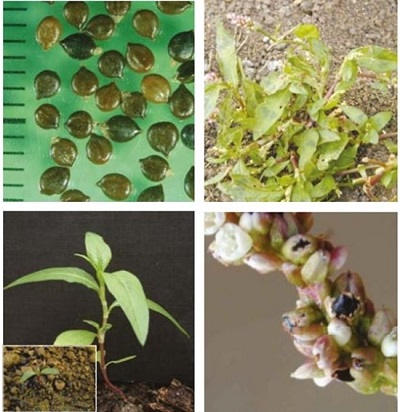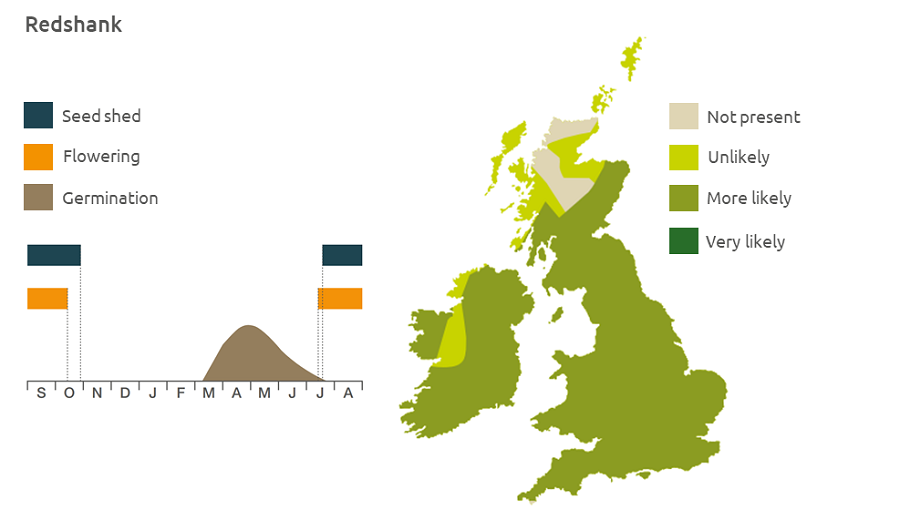- Home
- Knowledge library
- Distribution and biology of redshank in the UK
Distribution and biology of redshank in the UK
Redshank is a broad-leaved weed that can be a particular problem for spring crops. Find out how to identify and control it.
Overview
Redshank (Persicaria maculosa) is a common weed of spring crops. Seeds are retained on the plant and can contaminate grain at harvest. During cultivations plant fragments can root at the nodes. Plants are frost susceptible.
- It is particularly competitive in spring crops
- It has value to biodiversity
Description
It is a sprawling hairless annual which may have an upright stem. It has dark spotted tapering leaves. The flower spike is small but dense with pink flowers. The loose sheaths over the leaf stem base have long hairs.
Key features
Plant: The stem is hairless and the leaves have a characteristic blotch.
Flowers: The flowering spike is less dense than that of pale persicaria.
Lookalikes
Redshank may be confused with pale persicaria: pale persicaria has silvery hairs on the first true leaves, but redshank is not hairy. The first leaf of redshank is broad but that of pale persicaria is long and narrow

Location and life cycle

Geographic distribution
Redshank is a lowland weed growing to an altitude of up to 200 m. It is found on disturbed bare soils, such as arable land and soil heaps.
Soil type
It is found on a wide range of soil types but prefers sandy soils rich in nutrients and organic matter and well aerated, in the pH range 5–7.
Seed statistics
- Seed longevity: >5 years
- Germination depth: 1.5 cm
- Seed weight: 2.05 mg
- Seeds/flower: 2–4
- Seeds/plant: 200–800
Management
For advice on herbicides, please speak with your agronomist or adviser.
When was this information last updated?
This page is based on content from the encyclopaedia of arable weeds publication. Since it was first released in 2008, the publication has been redesigned several times but not revised. However, it remains a good foundation for general information on the distribution and biology of weeds.

